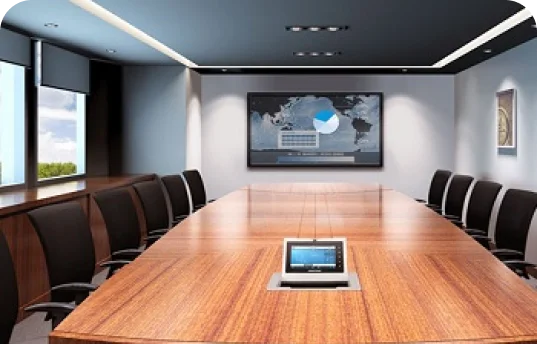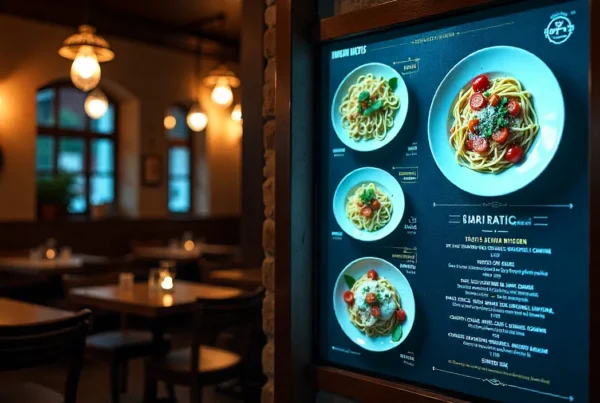Introduction to Conference Room Digital Signage
In today’s corporate environment, every meeting, interaction, and collaboration counts. Office operations now need an indispensable solution called conference room digital signage which satisfies demand for both efficiency and clarity. Digital displays serve businesses as intelligent high-tech devices which improve scheduling processes while guiding people through buildings and enhance communication throughout entire office spaces.
The Need for Digital Signage in Today’s Workspaces
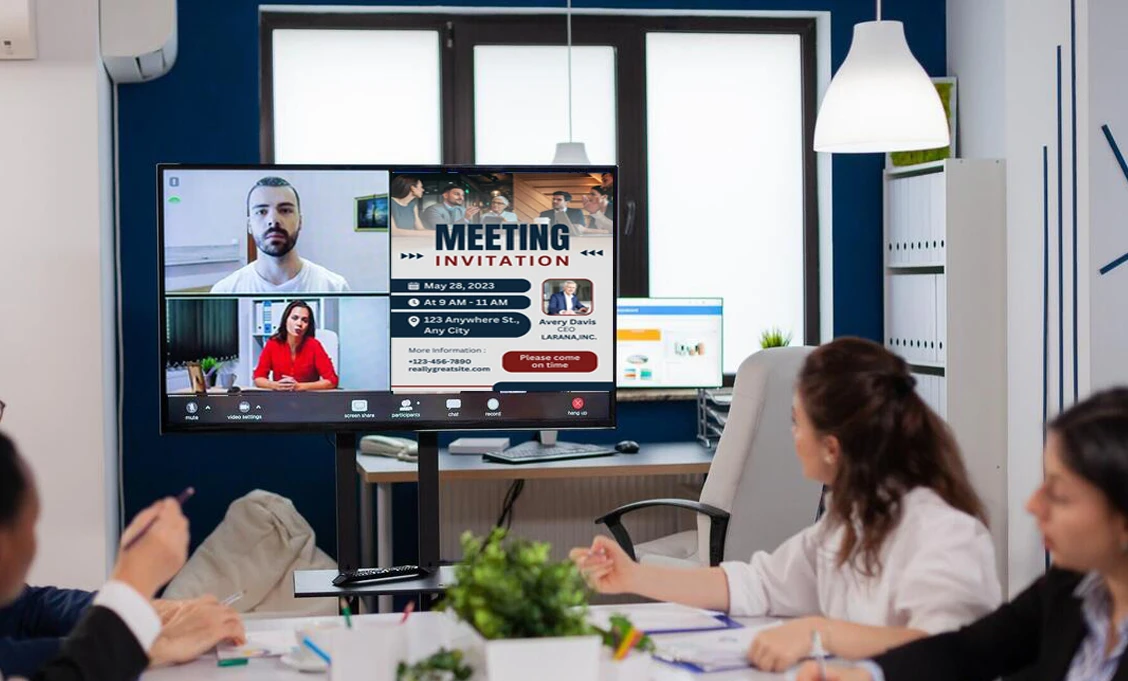
The practice of using printed schedules or whiteboard-marked meetings has become outdated. Organizations need flexible and quick response tools to handle their active traffic areas. Digital conference room signage satisfies workplace needs through its capability to display current information while performing automatic scheduling and smooth management operations which leads to clear understanding and less distraction and increased efficiency.
What Is a Conference Room Digital Signage Display?
The conference room digital signage display brings live information about room availability as well as booking details and meeting titles while also providing directions to viewers. The digital screens run on software which connects to office scheduling systems while featuring organization-branded displays for each room.
Key Features of Effective Digital Signage for Conference Rooms
Real-Time Calendar Syncing
The integration between digital signage displays Google Workspace and Microsoft 365 allows them to deliver instant scheduling updates.
Touchscreen Functionality
The interactive nature of these displays enables workers to reserve or prolong their meetings directly from the touch interface, which enhances their workflow.
Occupancy Indicators
A combination of LED lighting and status icons displays the current availability status of rooms through their visual indicators.
Custom Branding Options
Your system allows the addition of organization logos alongside theme selection and visitor greeting options for creating a customized display experience.
Benefits of Using Digital Signage in Meeting Rooms
Eliminates Double Bookings
Automated real-time synchronization eliminates the possibility of meeting conflicts in the system.
Improves Room Utilization
The signage system provides such data to help identify underutilized and overutilized rooms, thus enabling smarter space planning and executive efficiency.
Enhances the Professional Aesthetic
The installation of contemporary digital displays that maintain a modern appearance brings forth a cleaner professional look to any workplace environment.
Supports Hybrid Workforces
A digital sign system enables remote booking for distributed teams so staff can secure office space in advance thus promoting coordinated operations.
Types of Digital Signage Displays for Conference Rooms
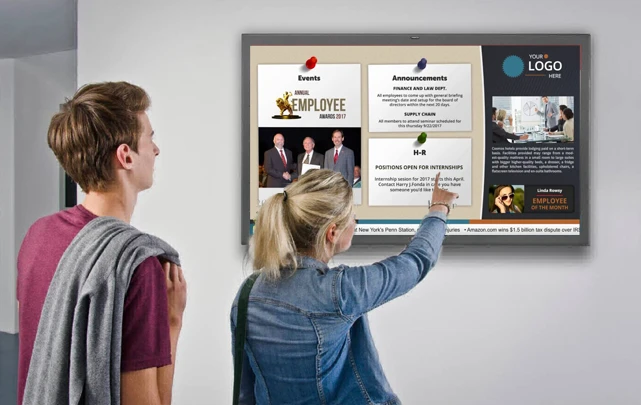
Doorway Panels
The display located next to the entrance provides real-time meeting information and availability status as well as instant booking capabilities.
Wall-Mounted Digital Displays
Digital displays installed in hallways or reception areas present multiple room schedules to make space availability easily visible for visitors and staff members.
Interactive Kiosks
The system lets visitors and employees view room schedules and maps combined with appointment check-in features to improve their navigation experience.
Digital Signage for Conference Rooms in Hybrid Work Models
Flexible room usage becomes necessary for hybrid work environments. Digital signage systems allow remote booking procedures and mobile application updates and flexible scheduling mechanisms that support both on-site and remote workers to maintain smooth coordination across different locations.
Best Digital Signage for Conference Rooms: What to Look For
A conference room digital signage system should possess the following features:
- The system includes ultra-clear displays with anti-glare coating that provides excellent viewing quality.
- The system provides straightforward installation and remote management capabilities through the cloud, which makes control operations easy.
- Built-in analytics provide room usage tracking, which helps companies maximize their room space utilization.
- The system provides users with touch and voice control capabilities for better usability.
- Real-time space management becomes possible when IoT occupancy sensors work with the system due to their compatibility features.
This technology delivers an intelligent signage infrastructure that will provide future readiness while increasing both office productivity and joint work capabilities.
Security and Compliance in Conference Room Signage
Sensitive systems connect to conference room displays. Enterprise-grade solutions provide these features which establish safekeeping for data:
- The system uses encryption to protect all transmitted sensitive information.
- Security features that enforce user authentication, access control, and privacy protection make up the solution set.
- The system provides administrative control dashboards which grant specific permissions based on user roles so authorized staff members can modify room parameters while scheduling meetings.
The implemented measures preserve both confidential meeting privacy and adherence to IT policy standards.
Accessibility and Inclusivity
Every individual must be able to utilize digital signage systems. Considerations for accessibility include:
- A visually impaired user mode with enhanced contrast settings exists as part of the system.
- The system features voice assistance, which makes the interface more accessible to users.
- The placement of digital screens and text fonts follows ADA requirements so all users can access information equally.
The practice of inclusive design maintains public areas that are friendly to every member of the community.
Design Tips for an Effective Digital Signage Display
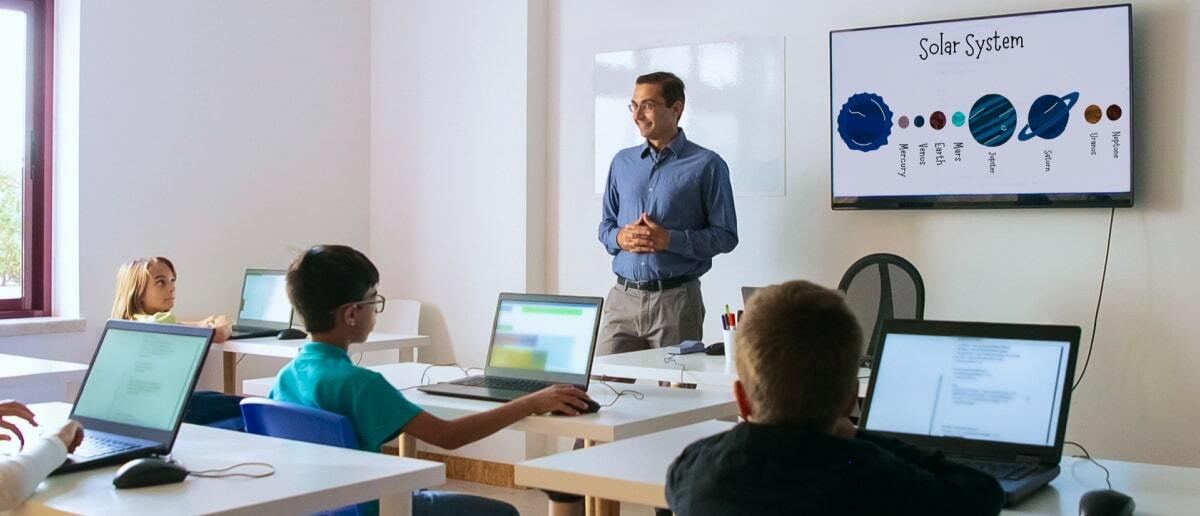
These guidelines should serve as foundational principles during the design process of conference room digital signage displays:
- The user interface must remain simple because the room status information should be shown immediately.
- The display system uses clear color standards to show availability in green and occupancy in red thus producing a straightforward user interface.
- Users need to find upcoming meeting information along with duration displays which should be presented prominently for better organization and awareness.
- The system includes a QR code together with an NFC tag for users to perform instant room booking through their mobile devices.
Scalability Across Locations and Teams
Digital signage solutions expand without limitation from five rooms to fifty rooms and beyond. Centralized IT administration enables teams to distribute updates and redesign layouts and gather analytics through global locations in minutes while maintaining consistent operations in all meeting areas.
Future Trends in Conference Room Digital Signage
- AI-Powered Scheduling: The booking process becomes smooth because AI algorithms automatically propose rooms according to attendee numbers and their preferences and past actions.
- Voice & Gesture Control: Voice and gesture control systems through touchless operations using commands from voice or sensors will become standard procedures for efficient and sanitary system management.
- Holographic Displays & AR Wayfinding: The future will bring holographic displays that use AR overlays to create interactive 3D visuals which provide users with futuristic signage experiences.
- Sustainability Integration: Digital displays which present information about energy efficiency and show room-related environmental impact data and scheduling options achieve alignment with sustainability practices.
FAQs on Conference Room Digital Signage
What is the main difference between a digital display and digital signage?
Digital display indicates the screen equipment, while digital signage combines the display technology with software programs and interactive features that operate above it.
Can digital signage be used in open collaborative zones too?
Digital signage proves particularly useful in huddle spaces along with lounges and shared zones because it provides essential scheduling information to all users.
How long does it take to implement a signage system?
Cloud-based solutions require a few hours to set up, but the deployment process for multiple rooms can last several days.
Is maintenance required frequently?
No. System updates occur automatically through the cloud, and hardware checks and content reviews need to be conducted only sporadically.
Can we display emergency alerts or internal announcements?
These systems serve real-time alert functions and policy reminder capabilities as well as visitor notification features which expands their utilization scope past meeting spaces.

